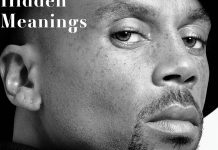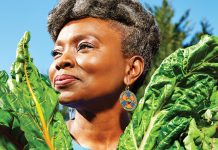
Courtesy of Stephanie Danler
In 2006 Stephanie Danler came to New York City and got a job at Union Square Cafe, the first restaurant in hospitality guru Danny Meyer’s empire. Although she worked her way up the New York restaurant chain and got her MFA in creative writing, that first job as a backwaiter stuck with her and became the subject of her debut novel, Sweetbitter. It follows 22-year-old Tess, who moves from Ohio to New York with no real agenda, and her year as a backwaiter at a restaurant based on Union Square Cafe. The book’s poetic descriptions of food and unflinching look at the restaurant industry made a bestseller when it first came out in May 2016. Now for its paperback release, Danler will read at the Margaret Mitchell House on May 10. We spoke to her about coming-of-age novels, the allure of the restaurant industry, and the very personal book she’s working on next.
Were you ever daunted by tackling the New York City coming-of-age genre?
There are few genres that Sweetbitter falls into, all of which I hate: coming of age, coming to New York City, and the restaurant book. When I was writing, I was really turned on by the idea that I could write against and with the best books of those canons, that I could challenge the standard coming-of-age Portrait of a Lady, or New York Bright Lights, Big City, or the standard restaurant book Kitchen Confidential. I happen to love all of those books that I mentioned, but you’ll notice they’re all written by men. I knew I was writing a book I wanted to read, which approached these conventions with a deeply feminine sensibility but with a sort of poetic tone. Anytime I had a chance to subvert readers expectations I took it. The standard coming-of-age novel fairytale narrative arc is: girl is good, girl is put into danger, girl is rescued, and it ends with a promotion or boyfriend. Tess is not good; she’s honest, self-destructive, walks into danger with a sense it’s a noble journey, and she’s not rescued or rewarded for her small epiphany at the end of the novel.
Most of Tess’s story takes place in New York. Why did you decide not to give her backstory?
In conventional novels backstory is used to justify what a character does in the present tense. Tess has damage, but we all do. We all manifest past in present action, but it says so much about a character when she decides not to think about past when she crosses the George Washington Bridge. It also reflects restaurant life. I worked with people for years in a temporary intimate, claustrophobic space, but I didn’t know what their last names were or where they’re from. I didn’t know anything about them, but I have a muscle memory for their quirks, what makes them laugh, how they look when they’re exhausted. It’s a familial relationship but not one that’s based on standard knowledge.
The New York Times called the book the new Kitchen Confidential. What made you want to highlight serving?
There’s plenty of literature about coming of age in publishing or fashion, but restaurants are still not seen as a legitimate industry where you can become yourself. My idea is that working for Danny Meyer or another great chef at that same moment in your life is just as valid and important as a more highbrow place like the New Yorker. I have worked in restaurants my whole life, from 15 to 31. I’ve never had another job, but the second I was hired at Union Square Cafe, I knew my life was changing. It was not a clock-in, clock-out situation. When I was hired by Danny Meyer, I became a food professional, and I fell in love with industry and saw how I could have a very fulfilling life in restaurants. When I started in 2006, very few places could give you that experience, where you were entering into space and weren’t just doing the mechanics of the job but becoming a better human by exercising empathy, giving care. Danny is famous for this hospitality—anticipating people’s needs, anticipating care: like an extra napkin so that someone can throw their food away, an umbrella when it starts raining, knowing when someone needs their wine topped off, or when someone is celebrating something. And that care extends to your coworkers; it’s prioritizing taking care of each other before taking care of the guests because it creates a trickle down effect of compassion.
You frequently are associated with the protagonist. Do you identify with her at all?
People associate with me Tess and will forever, but I’d been to years of wine school. I was running wine education and restaurants in my late 20s. I was mentoring people and aware of the power you have in mentoring people. When I was writing Tess, I was trying to access what it was like before I could smell a glass of wine and know it was white burgundy. But for the years I was managing, I would hire a young woman who told me she was just going to do this job for a year, save some money, then go get her real job. The women always fell in love with our bartender, always started coming in with darker circles under their eyes. But most also ended up falling in love with wine, and I got to witness that epiphany over and over again. You not only learn what you like but learn how to talk about it. Simone (an older waitress who is Tess’s mentor) is the character who is probably closest to me. Simone reflects what would’ve happened if I just stayed here, if I did this job for 10 more years and all my curiosity and excitement had been stifled and turned bitter.
You’ve mentioned how many of the characters are composites of people you knew in the industry. How have they responded?
It’s not about that year we all worked there. I blended so many years from working at a coffee shop in Ohio or a seafood shack in California. I’ve seen so many of my Union Square Cafe coworkers at readings. They want to see themselves in it, but the fact that this is not what happened to us allows them to enjoy it and see the little markers throughout the novel that you’d know if you worked there.
You capture Tess developing her palate so well with oysters and wine. What were gateway foods for you?
The first heirloom tomato I had when I got to New York— the bright tie-dyed heirlooms, misshapen lumps, the intensity of the flavor. I thought, I’m 22, and I’ve never tasted a tomato before. As for wine, I drank Yellow Tail at that point and couldn’t have cared less about wine, then I smelled this Rioja, a Remelluri, and I smelled stables. It was the first time I ever had visualization—a scent took me to an image.
What are you working on next?
A book of nonfiction. The book is about, in part, my decision to not have relationship with my father, but he’s still alive. I wrote a personal essay for Vogue about my father’s crystal meth addiction, the inheritance of addiction, and learning about boundaries. I was so resistant to writing that piece; it took me over a month to write. I have to work on what feels urgent. After I wrote that essay, the letters I was received showed me that so many people are dealing with loving addicts or dealing with their own addiction. I have no answers, but I can contribute to the conversation, and it felt like it was time to do that.













